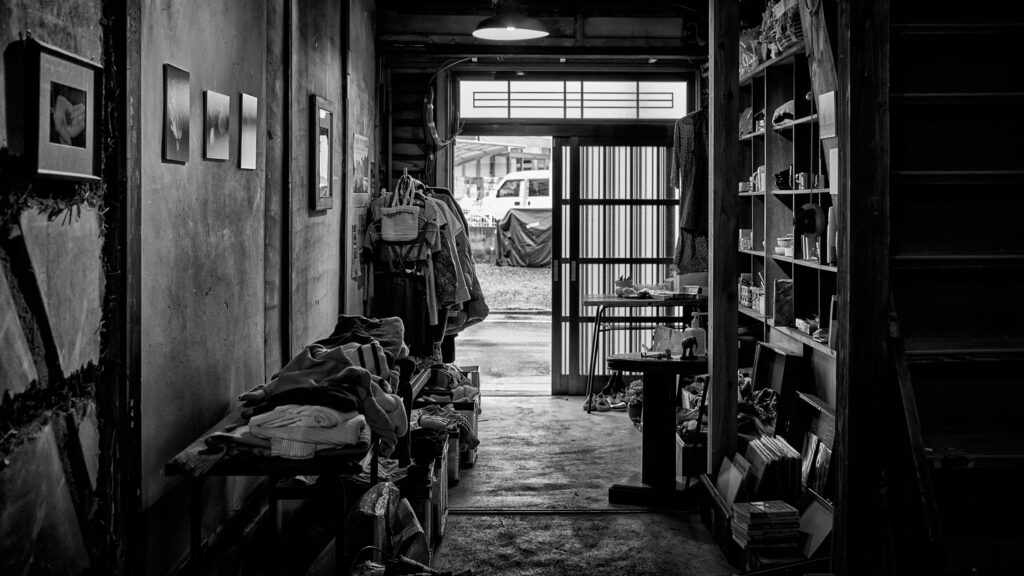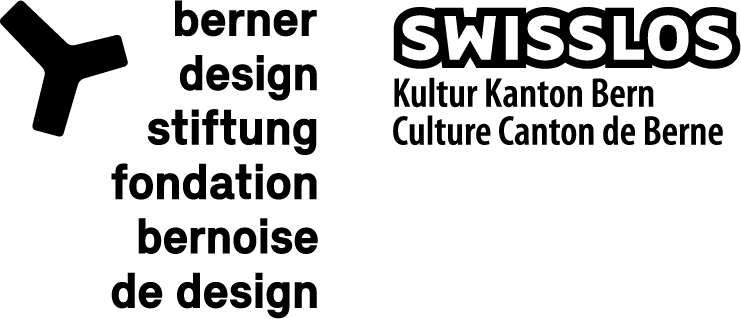
Image above: A community-run gallery and goods exchange space in a revived machiya, Jodoji Neighbourhood, Kyōto, 2024, Jan Eckert
Where Heritage meets constant Transformation
Kyōto is a testament to the delicate balance between the growing number of urban generations, the city’s cultural heritage, and the pressures of climate change and tourism. Traditional machiya architecture allows for fluid temporal patterns that integrate living, working and community care, while mass tourism threatens these carefully cultivated rhythms. This creates a fundamental challenge in maintaining contemplative practices while managing visitor flows.
In response to contemporary challenges, alternative urbanist groups have emerged, renovating old machiya with innovative grassroots approaches. Collectives like for Cities have transformed spaces such as a former pediatric hospital into the Bridge To studio—hosting the Noominute.City Research residency in May 2025.
Post-Efficiency Transformation
Kyōto’s machiya demonstrate how adaptable urban structures can transcend efficiency-driven planning. These wooden buildings integrate housing, commerce, craft production and social gathering in fluid configurations that change over generations. Their traditional mixed-use design, with front shops, living spaces and workshops, creates temporal patterns that naturally blend work, home life and community interaction – embodying the manifesto’s principles of being rooted in place while remaining stable yet permeable.
Intergenerational Dynamics
Traditional neighbourhood structures such as the one being investigated in Jodoji, Kyōto, create environments that allow for intergenerational exchange through their inherent flexibility. Emerging grassroots approaches to urban regeneration are now extending beyond traditional family structures to integrate diverse populations—including international residents, students, and visitors—into future urban commons. Local collectives renovate machiya not just as physical structures but as social ecosystems that blend contemporary needs with historical knowledge. These community-driven initiatives demonstrate how architectural heritage can maintain temporal continuity while fostering knowledge transfer between generations and cultures—a living example of rewriting urban narratives about inclusive, collaborative city life.
Climate Resilience
Traditional Japanese architecture and garden design offer proven approaches to climate adaptation. Machiya’s passive cooling systems, seasonal adjustments and relationship to garden spaces demonstrate sophisticated environmental knowledge. Their ongoing retrofitting demonstrates how historical understanding of seasonal patterns and microclimate management can inform contemporary climate resilience while maintaining high quality urban habitats – acknowledging the temporary and fragile nature of urban environments
Nominute.City Partners in Kyōto
for Cities
Based in Tokyo, Kyōto and Amsterdam, for Cities is an urban experience design studio that sees cities as works of art, created by our own hands. for Cities seeks to celebrate the rich but often overlooked urban knowledge and stories rooted in Asian cities. Their mission is to build an international collective of emerging urbanists who act together to challenge existing paradigms rather than follow western models of urbanism.
Bridge Studio
Based in Kyōto, the bridge studio is hosting international research residencies in urbanism, arts and design.
Pro Helvetia
The Swiss Arts Council promotes transdisciplinary practices in line with the Nominute.City research initiative. With its support, the Arts Council enables Nominute.City’s cross-cultural investigations into alternative urban paradigms.

Bernese Design Foundation
With a rich tradition of supporting design practitioners and researchers in the Canton of Berne, the Bernese Design Foundation’s support of Nominute.City promotes the Foundation’s recent commitment to social and transformative design research and practice.



